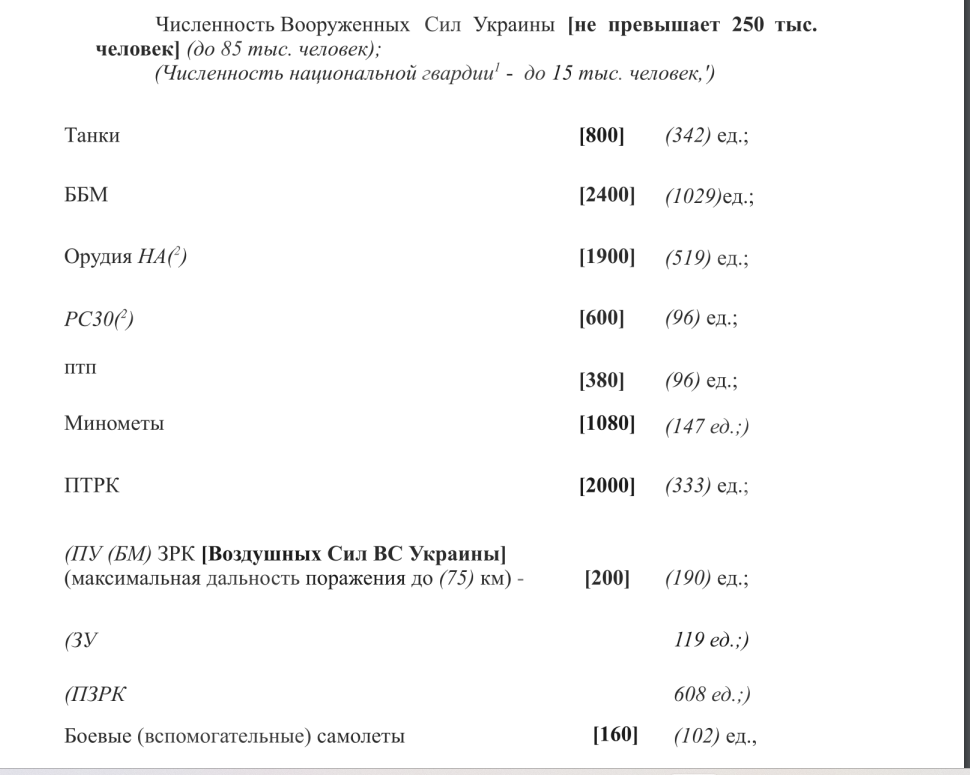Istanbul Agreements: the conditions under which Russia attempted to force Ukraine into a disgraceful capitulation in 2022.
At the end of the third year of the devastating war with Russia, many Ukrainians are pondering whether it was wise to prolong it for so long or if it would have been more prudent to sign the Istanbul agreements in the spring of 2022. The Informant obtained a nearly agreed version of this document dated April 15, 2022. A close reading reveals that it was not a path to peace. It was a trap set by Putin, who aimed to bring Ukraine under his control by rendering our country incapable of resisting aggression. Let’s break it down point by point.
Destroying the Ukrainian Army
According to the agreement, Ukraine would have to abandon not only its aspirations to join NATO but also any military alliances. Foreign weapons could not be imported into Ukraine, as is currently the case. Foreign military personnel could only be present in Ukraine unarmed, for instance, to deal with the aftermath of natural disasters. An exception would be made for Crimea and Donbas. We understand what troops and whose bases would remain there under the tricolor. These Russian enclaves would act as a knife held to Ukraine's throat, preventing any thoughts of resistance.
 1
1
To ensure that Kyiv had no thoughts of resistance, Ukraine would have been allowed to maintain an army fit only for parades. Let’s compare some figures. Under the Istanbul agreements, Russia wanted to allow Ukraine 342 tanks, whereas the Ukrainian side insisted on 800.
“In the 23 months of war in Ukraine, the Russian army has lost at least 2619 tanks. Given that the Russian armed forces entered the war in February 2022 with 2987 tanks, nearly 90% of this number has been destroyed over the past two years,” writes Forbes in January 2024.
As of June 2022, according to an interview with Deputy Minister of Defense of Ukraine for Procurement Denys Sharapov and Commander of Logistics of the Armed Forces of Ukraine Volodymyr Karpenko, provided to National Defence, it was revealed that due to active fighting in the war with Russia, Ukraine had lost up to 50% of its equipment.
"Currently, we have approximately 30-40%, and sometimes even up to 50% of equipment losses due to active fighting. Thus, we have lost about 50%. Approximately 1300 BMPs, 400 tanks, and 700 artillery systems have been lost,” reported Karpenko.
According to the document, the Russians wanted to limit the Armed Forces of Ukraine to 85,000 personnel. Meanwhile, on February 1, 2022, a Presidential Decree was signed, establishing the peacetime strength of the Armed Forces of Ukraine at 361,000 personnel. In January 2024, President Volodymyr Zelensky stated that the Ukrainian army currently comprises approximately 880,000 servicemen.
 2
2
If an unarmed Ukraine were to be attacked, it would be the guarantor states' responsibility to rescue it. However, Russia insisted that each of these states should have veto power over the possibility of assistance from all others. Here is the list of guarantor states.
 3
3
In other words, Russia would have had the right to veto assistance. Furthermore, it could compel its effective colony, Belarus, to do the same. This would allow other guarantors to wash their hands of the situation, saying: what can we do? Ukraine signed this agreement itself.
In fact, this is where the examination of the document could end. The Russian plans are crystal clear: disarm Ukraine and repeat the special operation, taking previous mistakes into account. And turn all of Ukraine into a vast Bucha. But let’s see what other traps this agreement conceals.
Taking Control of Ukraine Without a Single Shot
 4
4
This point represents a complete renunciation of Ukraine's sovereignty. The Russians, leveraging their colossal economic advantage (if the agreement had been signed in the spring of 2022, all massive Russian assets would have been unfrozen) and the threat of using force (no one could have prevented it), would have bought up the entire Ukrainian economy for a pittance. In the event of a new war, there would be no money for financing the Armed Forces of Ukraine or for donations.
 5
5
Moreover, Ukraine would not have been able to complain about such actions in international courts. Seeking justice and demanding decent behavior from the Russian FSB agents who would rush to plunder Ukraine would have had to take place in Moscow. You understand what kind of “Basman justice” that would entail. Remembering the arrest warrant issued by the International Criminal Court for Putin, the Kremlin knew exactly what should be prohibited.
We have examined the harsh obligations imposed on Ukraine. But what obligations did Russia have under the Istanbul agreements? None! This document is not an agreement between two states; it is a complete and shameful capitulation, the signing of which would have been more catastrophic than all these years of war.